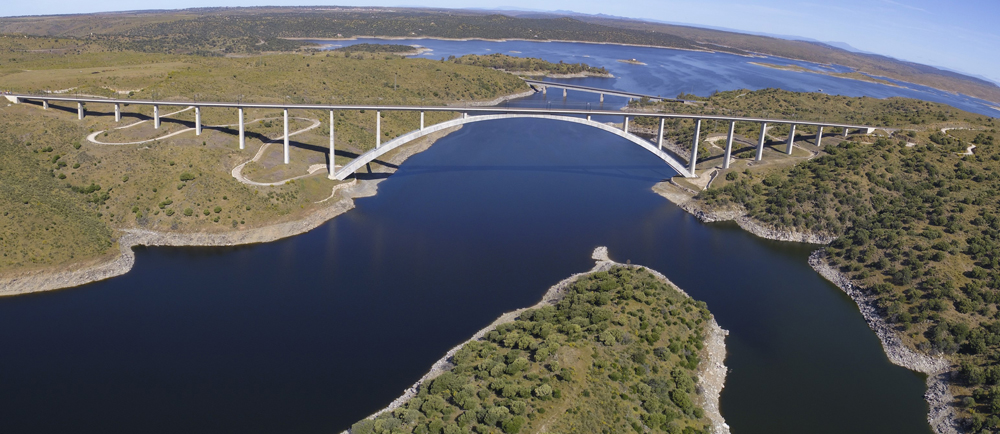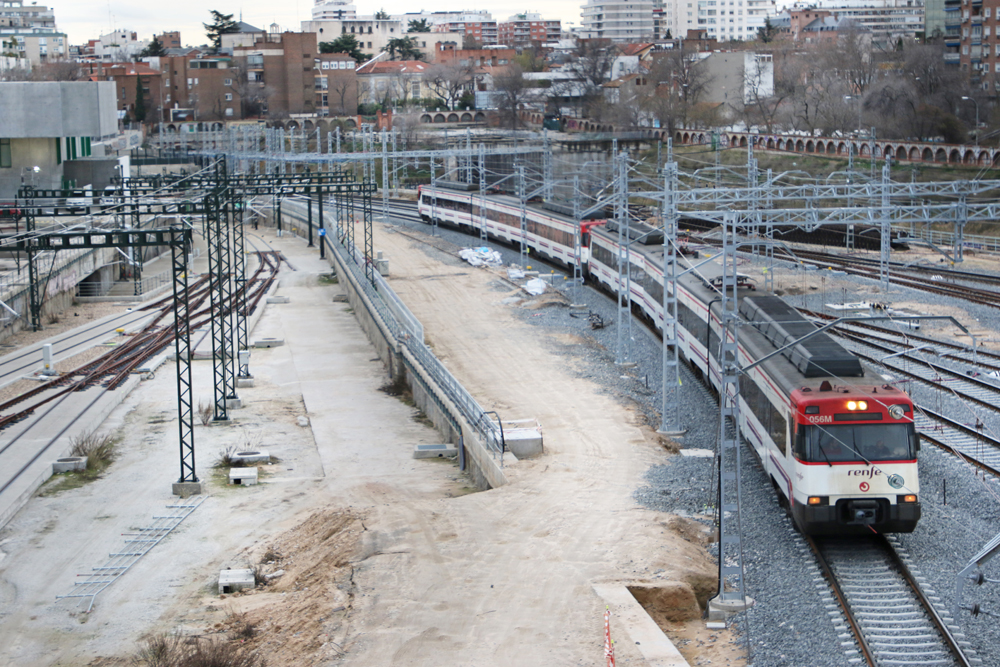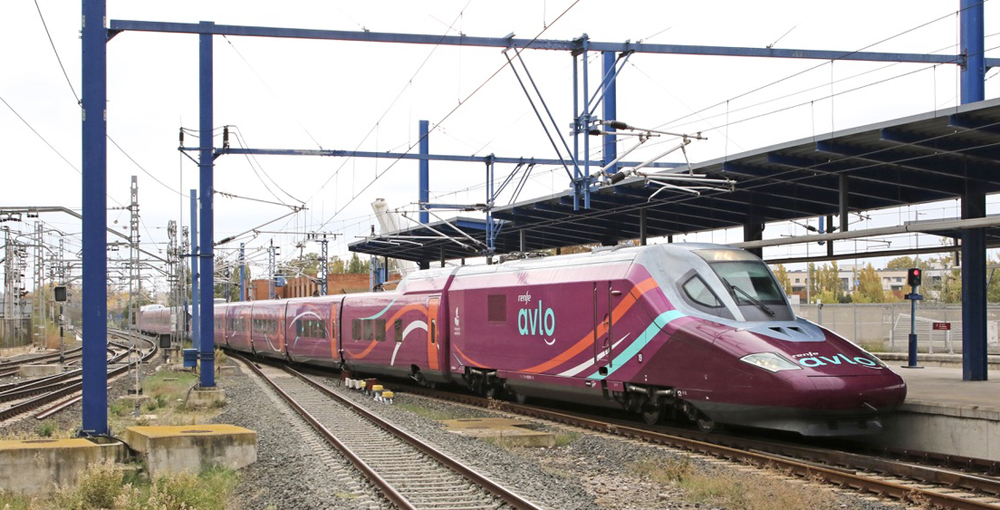
Spain has added to its high-speed rail mileage this summer and is on track to reach 2,500 miles within the next year, maintaining its position as home of the world’s second-largest high speed rail network. China is No. 1 with a network eight or nine times bigger.
As the Spanish network has grown, the government — which owns and funds the network — has encouraged competition among train operators; this is beginning to see results.
Three new lines in one month
July saw the nation open three sections of high speed lines, expanding and connecting the network, although in some cases the projects had been underway for many years and are still not fully complete.
A new 54-mile, 218-mph, standard-gauge line between Venta de Baños and Burgos opened July 22, extending the existing high speed rail line into the north of Spain. This has shortened journey times between Madrid and northern cities such as Bilbao and San Sebastian. Travel time between Madrid and Burgos has been trimmed by 45 minutes, from 2 hours, 15 minutes to one hour, 30 minutes.
To save money, the line has been built as single track, with space for a second track in the future. Eight pairs of trains have been using the new route.
A more ambitious high-speed project to the north, known as the ‘Basque Y’ lines, will significantly reduce journey times between Madrid and Bilbao/San Sebastian. This has been under construction for a decade and is near completion, with an opening date of 2023 pencilled in. This project includes a lengthy 15.25-mile Base Tunnel under the Pajares Pass. Spanish rail infrastructure company ADIF says it is spending around $12 billion on new high speed rail lines in 2022 alone.
One of world’s widest concrete railway arches
The 93-mile-long western section of a planned high speed line connecting Madrid to the Extremadura region and the Portuguese border opened on 19 July. Initially, this line ,from the small city of Plasencia to the border town of Badajoz its being operated as a broad gauge (5 foot, 6 inches) non-electrified route, as work to electrify it has just begun. This line has cost $1.7 billion and is built through a sparsely populated area. It includes 28 viaducts to span river valleys, with the Altmonte Viaduct featuring a 420-yard-wide arch. ADIF says it is one of the world’s widest concrete railway arches.
The route has been built with special concrete ties that allow rapid conversion to standard gauge, which is planned once the other 168-mile section from Madrid to Plasencia is built. This is unlikely in the next few years, as most of the route is still at the planning stage. ADIF has previously adopted this approach elsewhere in Spain, building part of a new route as broad gauge and later converting it to full high speed status.
Since July the number of trains between Madrid and Badajoz has been increased, although to just two train pairs a day rather than one on most days. One of these is the existing Intercity service formed of Talgo coaches hauled by a diesel locomotive; the other is a Class 730 bi-mode electric and diesel Alvia high speed train, operating at no more than 100 mph on diesel power for almost the entire journey. Only the line used in the suburbs of Madrid is already electrified for commuter rail trains.

The shortest section of new line to open in July is the first standard-gauge connection between the high-speed lines north of Madrid and those running to the south of Spain. The new 4.5-mile tunnel connects Madrid’s main high speed station in the south, Puerta de Atocha, with the city’s second high speed hub at Madrid Chamartín. There were already two broad gauge tunnels which take differing routes between the two stations, but only high speed trains equipped with gauge-changeable trucks could use these.
The tunnel project has been delayed many times; and despite tunnelling work being completed in 2011, installation of track and systems took a decade while other work was undertaken to create a 17-mile, four-track high speed section south of Madrid. Despite the extended construction time, the planned underground high-speed station under Puerta de Atocha hasn’t yet been built.
Competition, too
Later this year, there will be three high speed rail operators competing on the busiest routes in Spain. The government has encouraged “open access” competition on the government-owned rail network run by ADIF.

The government-owned national rail company, RENFE, operates high speed services across the country, but in some cases runs relatively few trains each day per route. These are branded AVE (for Alta Velocidad Española, or “Spanish high speed,” with “Ave” also the Spanish word for bird). In response to the threat of competition, RENFE set up a new low-cost operating company called “Avlo,” which has a small fleet of ex-RENFE high speed trains. These have a purple color scheme.
Plans to launch Avlo in early 2020 were delayed by the Covid pandemic, as were plans for SNCF, the French state-owned rail company, to enter the market. SNCF has set up its own “Ouigo España” low-cost operation, modelled on the ‘Ouigo’ model it has run in France for several years. Ouigo España uses a small fleet of modern 200-mph French TGV trains equipped for use in France and Spain. It started services on the busiest route in Spain, between Madrid and Barcelona, in March 2021.
The third new operator plans to begin service this November on the Madrid-to-Barcelona route and is the only one to include private investors. This joint venture between Italian state rail company Trenitalia and Spanish airline Air Nostrum is branded “iyro.” It will offer a wide range of passenger options, and not just be low cost. It will use 23 brand-new ETR1000 high speed trains built by Hitachi in Italy. This equipment is already in use in Italy, where Trenitalia has faced private-sector high speed competition since 2012. Since December 2021, the ETR1000 trainsets have also been used for new high speed services from Milan to Paris, as well as some open-access services in France competing directly with SNCF’s TGVs. Within a few years, iyro plans to offer services linking Madrid with Barcelona, Valencia, Alicante, Malaga, and Seville.














I wonder if there are any plans to offer decent Madrid to Lisbon service. Since the night train was axed there is no there is zero through service. This seems to me to be ripe for a high-speed rail connection.
Meanwhile in the good old U.S. of A. …….
In Good Ole USA, a former governor of Wisconsin pushed his proposed schlepidiche Madison train as High Speed Rail. Then he wondered why no one supported it.
As my wife always says, if he called it “a train” instead of “high speed rail”, it would be running now.